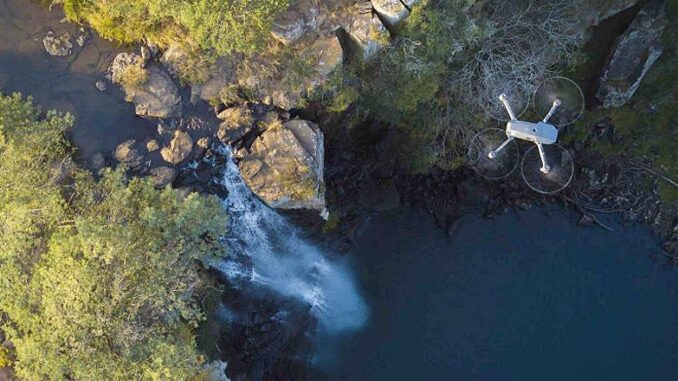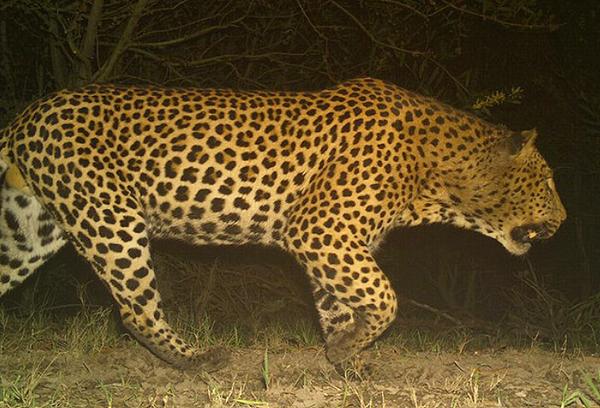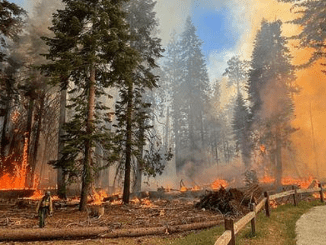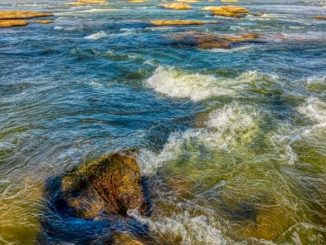
By Kate Handley
CAPE TOWN, South Africa, January 6, 2024 (ENS) – South Africa’s limited protected-area estate is increasingly coming under threat from mining. This is facilitated by an enabling regulatory environment that permits mining and related activities within certain protected areas.
We are truly fortunate to live in a country with exceptional biodiversity. South Africa is one of only 17 megadiverse countries, a group of countries that comprise only 10 percent of Earth’s surface, yet host 70 percent of its fauna and flora.
Our unique biomes, from fynbos to grasslands, host a remarkable diversity of species. We should be proud of and nurture our rich natural heritage, which brings an array of benefits for people and the economy.
Yet we aren’t faring all that well when it comes to conserving South Africa’s unique and threatened biodiversity. Despite the National Environmental Management: Protected Areas Act enabling the creation of protected areas, to date just more than nine percent of our terrestrial landscape is formally protected, mostly in national parks and nature reserves.
This figure is more than a little worrying given our recent commitments to ensure that by 2030 we conserve at least 30 percent of terrestrial, inland water and coastal and marine areas. An ambitious and daunting task!
We have a long way to go before we reach this 30×30 target, and yet South Africa’s limited protected-area estate is increasingly coming under threat from mining. This is facilitated by an enabling regulatory environment that permits mining and related activities within certain protected areas.
The act makes provision for several types of protected areas, ranging from national parks (afforded the most stringent protection) to protected environments. Protected environments, declared for (among other reasons) the conservation of biodiversity, make up a third of the country’s protected-area estate.
But alarmingly, the act also empowers the minister of forestry, fisheries and the environment to permit mining in a protected environment.
These controversial provisions have been the subject of judicial scrutiny in the Mabola case. The Mabola Protected Environment, near Wakkerstroom in South Africa’s eastern Mpumalanga province, was declared in 2014 to conserve grasslands and wetlands comprising “irreplaceable” and “optimal” critical biodiversity areas.
It also formed part of the Enkangala-Drakensberg Strategic Water Source Area – one of 22 Strategic Water Source Areas which produce 50 percent of South Africa’s freshwater.
Mabola falls within a strategic water source area that feeds the catchments of the Vaal, Pongola and Tugela rivers
The minister granted permission to mine for coal in Mabola, a decision challenged by a coalition of eight civil society organisations represented by the Centre for Environmental Rights. The case was eventually won – although a second case which challenges the MEC’s decision to revoke the protected environment status in order to permit mining is still pending before the high court.
Mabola is by no means the only example of an attempt to mine in a protected environment. The problem is becoming increasingly persistent.
Most recently, we have seen an application to mine tungsten in the Moutonshoek Protected Environment on the West Coast.
In 2018, Bongani Minerals (Pty) Ltd, based near Cape Town, applied to mine tungsten and molybdenum within the Moutonshoek catchment region near Piketberg in the Western Cape.
The Moutonshoek Protected Environment, established under the National Environmental Management: Protected Areas Act of 2003, encompasses a region of integrated land-use where agricultural activities and biodiversity conservation coexist harmoniously. This protected site safeguards the Krom Antonies River and its catchment, the primary tributary of the Verlorenvlei wetland system.
The biodiverse Verlorenvlei Estuary, located downstream of the proposed mining project, is inhabited by a wide range of aquatic and bird species, including endangered species like the African black oystercatcher and the endemic Verlorenvlei redfin.

Moutonshoek not only protects endangered ecosystems and species but serves as the catchment for the primary tributary to the Verlorenvlei Estuary, a Ramsar Wetland of International Importance and important bird and biodiversity area.
The area stands to suffer significantly from the proposed tungsten mine, which threatens the site’s unique biodiversity as well as its water resources.
One would be forgiven for failing to understand how mining, an inherently destructive and environmentally damaging activity, can ever be accommodated within an area that has been formally protected to conserve ecosystems and species.
Yet section 48 of the act enables this. The section was revised in June 2023 to outline specific considerations for the minister when granting permission, such as assessing the ecological integrity of the protected environment. While these changes enhance environmental scrutiny, they fall short of eliminating the option of mining in protected environments, a step that should have been taken.
The section is permissive. It facilitates the erosion of the country’s protected area estate, undermining commitments the government has made to conserve biodiversity in terms of the recently published White Paper on the Conservation and Sustainable Use of South Africa’s Biodiversity and the National Protected Areas Expansion Strategy.

It is also inconsistent with the objective of the act, namely, to create a network of protected areas as part of the government’s strategy to conserve South Africa’s biodiversity. Mining is, by its nature, environmentally damaging. One only needs to look at the havoc that has been wreaked in Mpumalanga by a legacy of coal mining to understand that mining is inimical to any efforts to protect the environment.
But section 24 of the Constitution guarantees the right to have the environment protected. The primacy of environmental protection was aptly articulated by Justice Sandile Ngcobo in the landmark Fuel Retailers case, who wrote, “Development cannot subsist upon a deteriorating environmental base. Unlimited development is detrimental to the environment and the destruction of the environment is detrimental to development. Promotion of development requires protection of the environment. Yet the environment cannot be protected if development does not pay attention to the costs of environmental destruction.”
Development therefore must be justified in the context of measures that protect the environment.
What does all this mean? That mining undermines environmental protection is hardly arguable. Permitting mining in a protected environment is consequently inconsistent with the purpose of declaring a protected environment (to protect biodiversity), the objectives of the act, and the constitutional duty to protect the environment.
While this deleterious provision stands, we are not doing enough to protect our protected areas. We have made commitments both domestically and internationally to expand, not erode, our protected areas.
If we stand any chance of meaningfully reaching the target of 30 percent of terrestrial land effectively protected by 2030, we need to ensure that activities that undermine efforts to safeguard biodiversity are prevented, and our rich biodiversity conserved.
Editor’s note: Kate Handley is an environmental attorney and co-founder of the Biodiversity Law Centre, a non-profit organisation that seeks to use the law to reverse the catastrophic decline of biological diversity in southern Africa.
This article was originally published in the Daily Maverick © Conservation Action Trust 2023-24, republished with permission.
Featured image: Mabola Protected Environment, South Africa (Screengrab from video by Johnny Miller / AfricanDrone)
© 2024, Environment News Service. All rights reserved. Content may be quoted only with proper attribution and a direct link to the original article. Full reproduction is prohibited.



